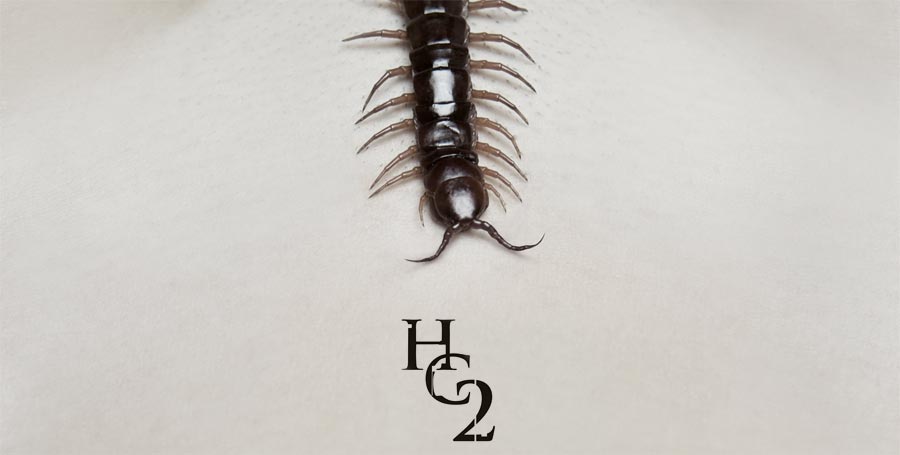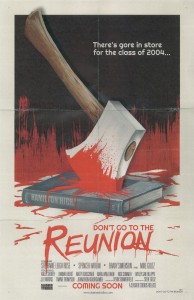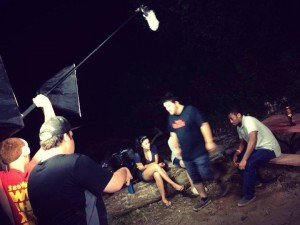In August of 1972, an unknown filmmaker named Wes Craven released The Last House on the Left. The film ran 84 minutes, and was shot on a small $87,000 budget. It starred a group of first-time actors and was written by two men with little-to-no experience in film. It was the first true indie horror film, and it changed the genre forever.
[WATCH: The making of Wes Craven's The Last House on the Left]
Following the unprecedented and unexpected success of The Last House on the Left, other horror filmmakers began to release their own films without the help of big studios and a major budget. In 1974, Tobe Hooper’s The Texas Chain Saw Massacre made waves, despite its tiny budget and lack of star power. In 1981, Sam Raimi and his childhood friends released The Evil Dead, which was recently remade.
Fast forward to 2007 when, inspired by the creaking sounds of his settling home, filmmaker Oren Peli grabbed a home video camera and shot a film called Paranormal Activity on the nearly microscopic budget of just $15,000. The movie would go on to become a national phenomenon, spawning a multi-million dollar franchise, with a new film released seemingly every year since the first hit the big screen. Paranormal Activity is currently considered the most profitable film ever made.
The world of horror films is unlike any other entertainment genre. It is a world run by misfits and outsiders, not studio executives or the Academy of Motion Picture Arts and Sciences and their Oscars. Most importantly of all, it is a world run by the fans and for the fans.
Much like the historically devoted followers of Star Trek or Doctor Who, horror fans are not bound by the trends, popularity, or even timeliness that mainstream audiences tend to care about. More often than not, indie films are created in homage to the “golden days” of horror in the 1970’s and 80’s, and don’t worry about capturing the interest of the general public.
[LINK: Philadelphia's semi-annual Monster-Mania horror convention]
So just who are these rabid fans, devoted to the perpetuation of genre that now makes up less than 5% of the box office?
Kevin Sommerfield’s Teddy & Don’t Go To The Reunion
Like many devoted fans of horror, Kevin Sommerfield got an early start.
“I started watching horror at the age of 5 with the original Texas Chain Saw Massacre. It scared the hell out of me and I couldn’t sleep for two days. It was a feeling that no other genre could give me: a pure adrenaline rush. I couldn’t wait to experience it again and again and again. It was with that film that the horror fan was born inside of me,” Sommerfield stated.
However, it wasn’t until the Wisconsin native’s teenage years that he began to consider the possibilities of creating his own films, influenced by legendary horror directors like Wes Craven.
Sommerfield’s first horror films were short parodies and homages to the era of slasher films, which tend to feature a masked killer preying on teenagers (Friday the 13th, Halloween, and Nightmare on Elm Street are among the most popular and iconic slasher films).
“It was just my friends and family having a good time. It wasn’t until college that I became obsessed with the idea of becoming a filmmaker. I felt that horror [as a genre] wasn’t “fun” anymore and I really wanted to change that.”
Sommerfield wrote and produced the short film, which was directed by friend and frequent collaborator Steve Goltz. “Teddy” tells the story of four college students who, after a freak hit-and-run accident, are hunted down by a masked lunatic in the woods.
[WATCH: The trailer for Teddy]
“Teddy” was shot in just four days, and faced its fair share of difficulties.
“There’s never enough time and there’s never enough money,” Sommerfield says.
But money and time weren’t the only problems Sommerfield faced. In fact, entire portions of the script, including the ending, had to be rewritten due to an unexpected snowstorm in the middle of production.
“We weren’t sure if we were going to get all the shots we needed before
the storm hit. Nevertheless, it all came together and the snow was a pleasant accident because it added a layer of atmosphere to the film,” says Sommerfield.
Since Teddy, Sommerfield and Goltz have gone on to produce two more short films, Popularity Killer (an homage to 90’s slasher films like “Scream”) and Blood Brothers (a psychological horror-drama). In 2013, Sommerfield and Goltz released “Don’t Go To The Reunion”, the duo’s first feature length film.
Unsurprisingly, “Don’t Go To The Reunion” pays homage to the 80’s and 90’s slashers that Sommerfield grew up watching, and features a killer on the hunt for revenge at a 10-year high school reunion.
[WATCH: An exclusive clip from Don't Go To The Reunion]
Sommerfield is one of the many optimistic independent horror filmmakers with an eye on the future and a foot in the past.
“If this is what you love to do, do it! Never let anyone say that you can’t do something or that it is not worth the effort. There will always be naysayers out there but if this is your passion, if this is something you truly cannot live without doing, do it!”
Roman Jossart’s The Campground
With so much emphasis on the 80’s and 90’s, it’s unusual that so many younger fans continue to flock to the horror genre.
21-year-old Roman Jossart was just 15 when he first saw The Blair Witch Project, and it changed everything for him.
“After that movie, and 20 minutes of telling myself to get up and turn the lights on, I was changed, and started going to horror conventions. It was all uphill from there,” Jossart says of his introduction to the horror genre.
As a freshman in high school, Jossart began working on a horror novel titled “The Campground”. The novel never came to fruition, but years later, after the breakup of his band, Jossart decided to transform the manuscript into a horror screenplay of the same name.
Much like Sommerfield and countless other indie directors, Jossart and his crew were plagued with difficulties when production began. “We started the project off with about 33 members in the cast and crew, and ended with about 10. Every week less and less people would show up, but that’s just the challenge of low budget indie filmmaking where you don’t get paid,” Jossart says.
One the most heartbreaking moments for Jossart was the loss of three of his four lead actors. “It felt like my vision and dream were just crumbing beneath me.”
However, “The Campground” persevered, and was finally released on Nov 12, 2013 to a short theatrical run.
[WATCH: An official trailer for The Campground]
For young filmmakers on microscopic budgets like Jossart (“The Campground” was filmed on only $3,000), the support of friends and family can be more important than budget or production costs.
“I was able to see who was really there for me and who were my true friends. My group of “friends” grew smaller in size quite fast. I’m thankful for it because now I know who is really there for me in my time of need.”
When asked what advice he would give to other young filmmakers, Jossart cites an encounter with indie horror legend Adam Green, whose film Hatchet has become one of the most successful independent horror films in recent years.
“My words of advice come from my idol Adam Green. I stood in a line for about 2 hours just to meet him, and the words he passed on to me were ‘Love hurts’. At first I was a little confused by these words of advice, but he told me ‘If this is what you love and it is your passion, it will come with great heartache. You have to tough through it and no matter how many people tell you no, you just keep your head up and prove them wrong’ So that’s what I will pass on to

















 Tuesday, February 25, 2014
Tuesday, February 25, 2014
 Blake C
Blake C


 Subscribe
Subscribe Follow me!
Follow me!